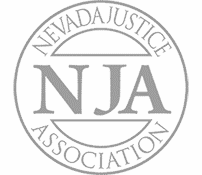START YOUR FREE CONSULTATION
NO FEES UNLESS WE WIN!
Whenever you or a loved one has suffered an injury, or even death, as a result of an accident or someone else’s negligence, you might not be physically prepared for the rigors of a lawsuit that seeks to compensate you for your injuries or the loss of your loved one.
A personal injury attorney can help you navigate the complex legalities of your case that arise due to your injuries or just because an insurance company has denied your claim. Here’s a brief overview of the different steps that make up the process of a personal injury lawsuit.
Call (702) 382-0000 For a Free Consultation
Screening Process
The injured party is usually the one who begins the process of initiating a lawsuit by contacting an attorney to request a consultation to discuss an overview of the case and the injuries sustained. During this initial consultation, the lawyer may ask you to sign a form authorizing the release of your medical records. They will want to know about all your insurance coverage, whether you’ve talked to any insurance adjusters, and what was said.
After accepting the case, the attorney will then conduct a thorough investigation of the case. This process includes interviewing witnesses, gathering and safeguarding any physical evidence, obtaining photos or videos of the accident scene and injuries, and contacting insurance providers.
Settlement Negotiations
Before filing an actual lawsuit, your attorney will first contact the at-fault party and their insurance provider to determine if an equitable settlement can be reached before going to court.
Based on the facts of the case, your attorney will send a demand letter to the insurer with a settlement amount. If an agreement cannot be reached, the next step is litigation.
Complaint is Filed and Served
Your attorney will move quickly to file the necessary paperwork with the court that triggers the litigation process. The first paperwork filed is called the complaint, which is a review of your case against the defendant. The complaint outlines the parties involved, court jurisdiction, plaintiff claims, the facts surrounding the claim, and a demand for justice.
The defendant will then receive a summons notifying them of the complaint and of the timeline they have to file an answer or pursue dismissal of the case. Both the summons and complaint are served on the defendant either in person or via the mail.
Answer to Complaint
When the defendant responds to the complaint and summons, it is called an answer. The answer responds to the complaint paragraph by paragraph in one of three forms: Admitted, denied or not enough knowledge to admit or deny.
The answer may also include defenses or reasons why the defendant should not be held liable for the plaintiff’s injuries. Often, the defenses are the basis for a motion to dismiss.
Discovery
Discovery is one of the most important aspects of any legal proceeding. During this part of the litigation process, attorneys for both sides collect information and gather testimony, evidence, and documents concerning the case.
The federal court system began requiring the sharing of all relevant facts between the parties in a case in the late 1940s, and virtually every state in the union has followed along with the practice. The three basic forms of discovery are written discovery, production of documents, and depositions.
Written Questions
Written questions, also known as interrogatories, are nothing more than your version of the facts of the case. The questions can be specific to your case or more broad in nature. If they are hard to understand, your attorney will help you decide which ones to object to.
Although not commonly used, requests for admission ask you to admit or deny certain facts in your case and have penalties associated with them for not responding, responding falsely or even answering late.
Production of Documents

Any of the parties in the lawsuit have the right to see almost any document that is related — even slightly — to the case. Depending on the particular type of case, in medical malpractice, for example, the number of documents can be extensive. Some courts may even allow computer files to be used as part of document discovery.
Depositions
In a deposition, an individual will answer questions posed by an attorney under oath and in front of a court reporter who will make a transcript of the session.
Attorneys typically use a deposition to lock individuals into their testimony, to test the strength of the opposition’s case, and to test how a person will respond before a judge and jury.
Related: Things to Know Before Your Personal Injury Deposition
Hiring Expert Witnesses
Your attorney may also opt to hire expert witnesses — individuals who are acknowledged experts in their field — to bolster your claims and case. Depending on the testimony they are providing, expert witnesses can be expensive. Your attorney will likely factor these expenses into their cost once damages are awarded.
Pre-Trial Motions
A motion is a request filed by an attorney that asks the court for a ruling on a particular matter. A defendant in a personal injury case may decide to file a motion to dismiss soon after the discovery phase is complete to convince the court to dismiss all or parts of your case as invalid. Once a motion is filed, the other party has between six and 14 days to respond.
Other types of pre-trial motions include summary judgment motion, motion for default judgment, and sua sponte dismissal. All three of these examples can terminate the progression of litigation. Sometimes the court will hold a hearing to consider motions. After a decision is reached on any motions that have been filed, you are ready to proceed to trial.
Mediation
Mediation can occur at any time during the litigation process and consists of a joint meeting between the plaintiff, defendant, their attorneys and a neutral party known as a mediator.
Both sides present their cases and talk about whether a settlement is possible. Mediation is non-binding.
Trial
It’s important to remember that in most personal injury disputes, a settlement is often reached well before the need for a trial. However, there is still a small percentage that will go as far as a trial. In the trial phase, a judge or jury will examine the evidence and decide whether there is enough evidence to hold the defendant responsible for your injuries and to what extent.
A trial is composed of six parts – jury selection, opening statements, testimony and cross-examination, closing arguments, jury instruction, and jury deliberation and verdict.
If you have been injured as a result of an accident or another person’s negligence, it’s important to contact a qualified injury attorney law firm. A lawyer can help you better understand the options available to you depending on your circumstances and can help guide you through the complicated process of taking a personal injury claim to trial.
Areas We Service in Las Vegas, Nevada
Las Vegas Strip | Henderson | Anthem | Summerlin | Paradise | Spring Valley | North Las Vegas | Summerlin North | Summerlin South | Sunrise Manor | Nellis AFB | Desert Shores | Downtown South | Charleston | Richfield | Crestwood | Angel Park Ranch | Queensridge | Casa Grande Pines | Winchester | West Las Vegas | Green Valley North | Lake Las Vegas | Sun City Summerlin | La Madre Foothills | Tule Springs | Mac Donald Highlands | Green Valley Ranch
Call (702) 382-0000 For a Free Consultation
Adam S. Kutner is a top 100 trial lawyer with 34 years’ experience and expertise that will benefit you
Call us at (702) 382-0000 anytime to schedule a free consultation. We will work to get you the maximum settlement as quickly as possible so you can move forward on your healing journey.
START YOUR FREE CONSULTATION
NO FEES UNLESS WE WIN!
Home visits are available
Call now for details
SE HABLA ESPAÑOL

Adam S. Kutner
PERSONAL INJURY LAWYER
With more than 34 years of experience fighting for victims of personal injury in the Las Vegas Valley, attorney Adam S. Kutner knows his way around the Nevada court system and how to get clients their settlement promptly and trouble-free.














